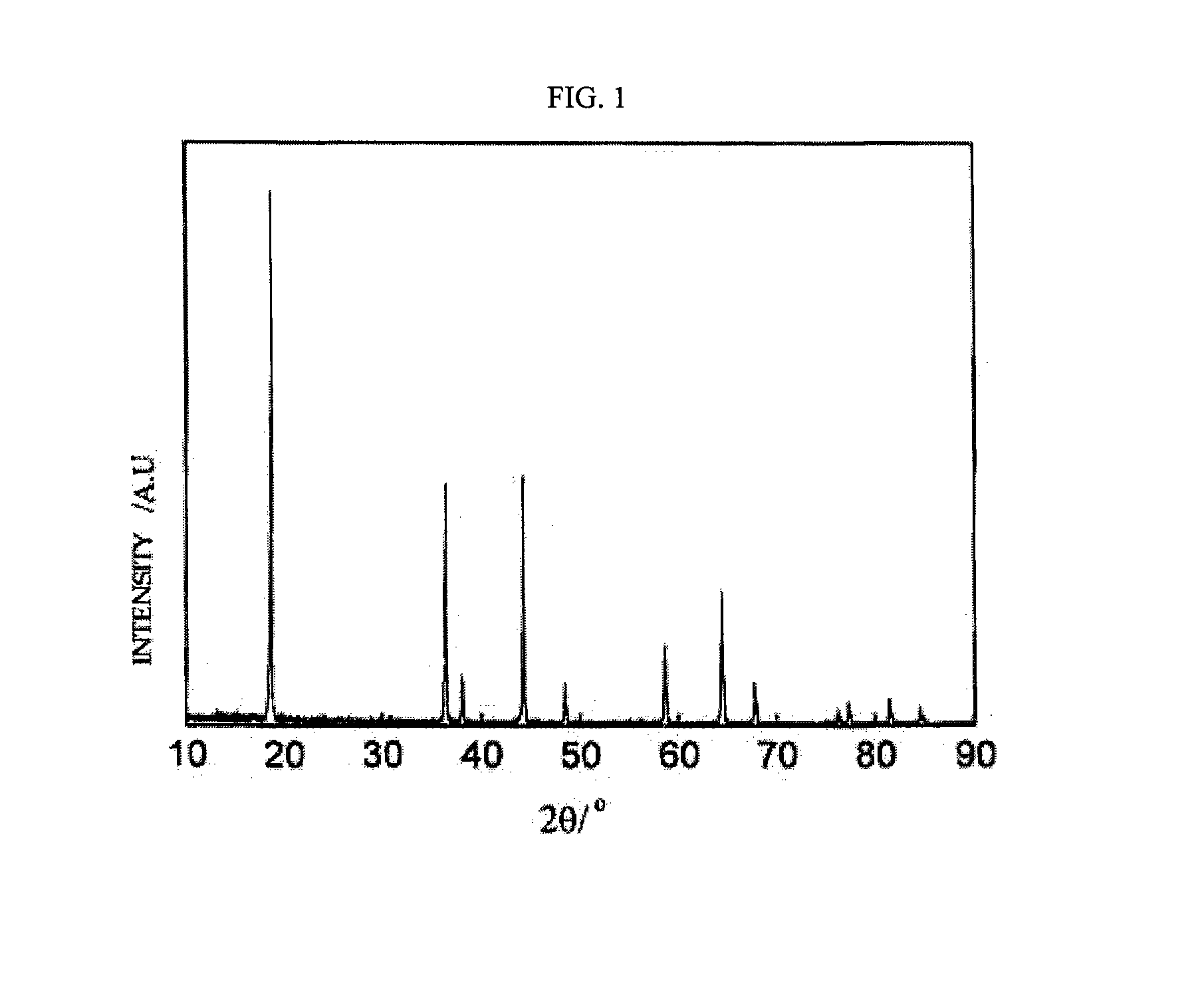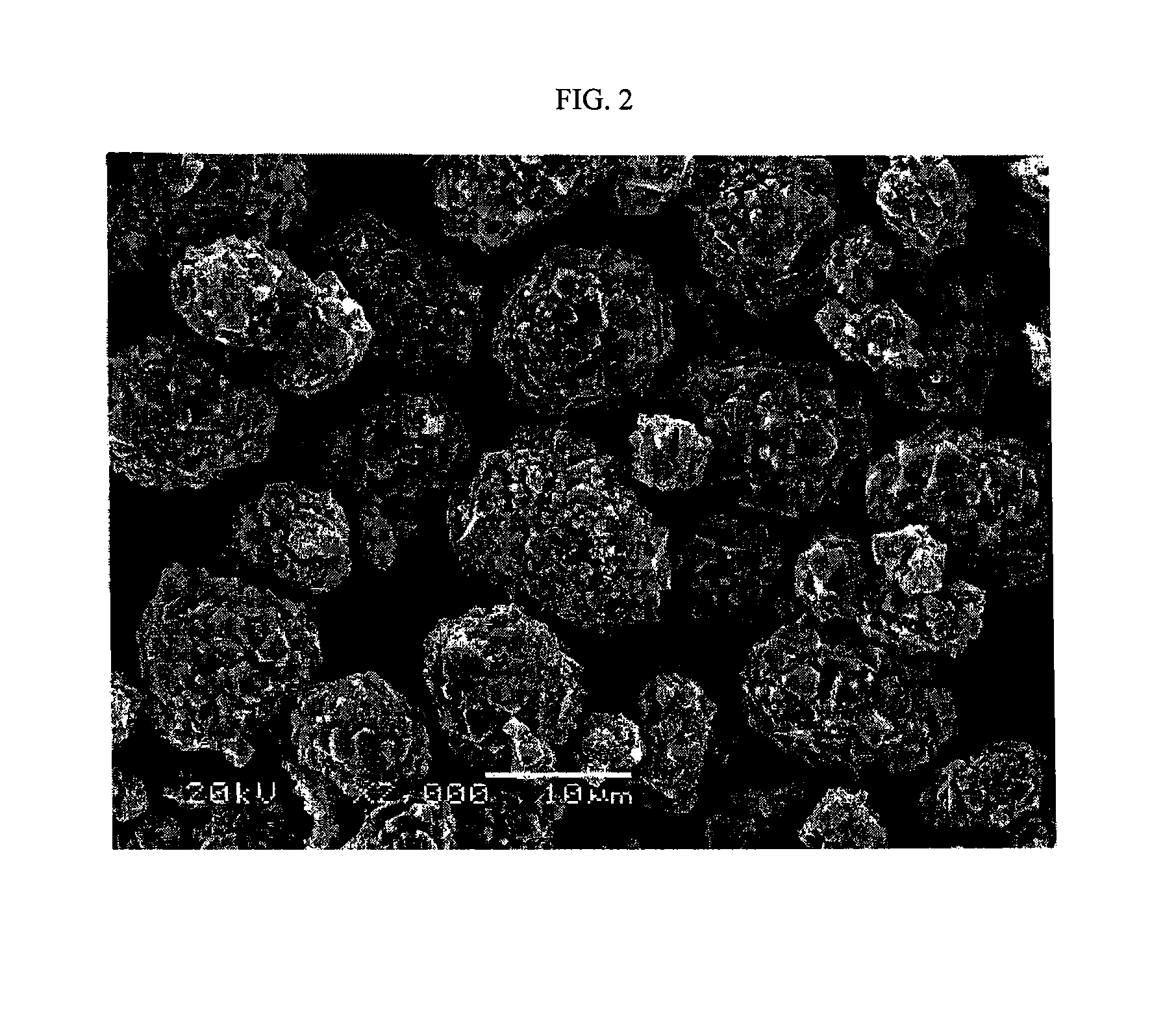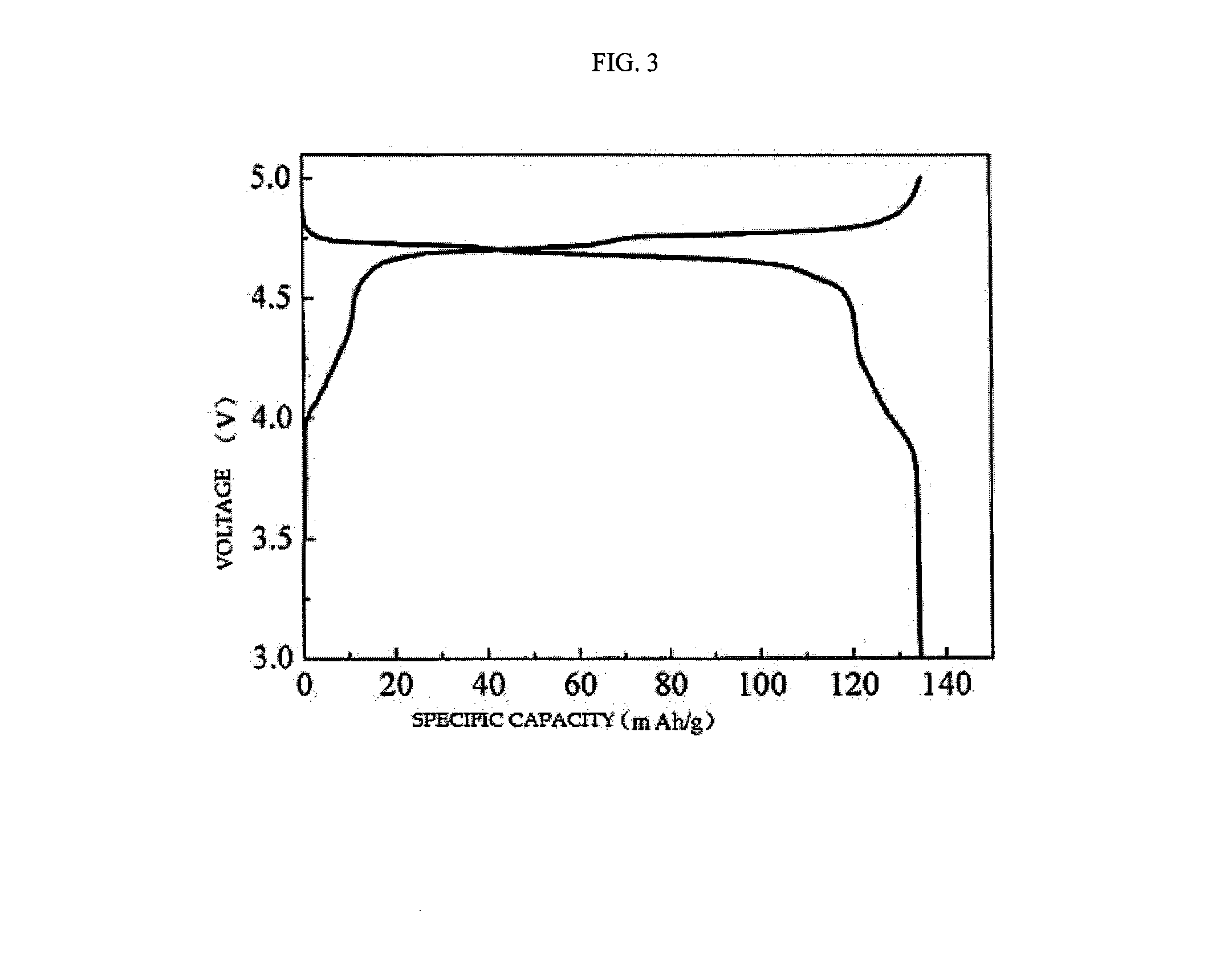High-voltage lithium battery cathode material
a lithium battery, high-voltage technology, applied in the direction of conductors, cell components, nickel compounds, etc., can solve the problems of prohibitive cost of cobalt-based cathode materials, relatively fast fading of capacity, and difficulty in commercial production, so as to avoid capacity attenuation, increase conductivity, and stabilize crystal structure
- Summary
- Abstract
- Description
- Claims
- Application Information
AI Technical Summary
Benefits of technology
Problems solved by technology
Method used
Image
Examples
embodiment example 1
[0040]A 3000 ml soluble salt mixed solution was prepared by 4.5 mol manganese sulfate, 1.38 mol nickel sulfate, and 0.12 mol copper sulfate, and a 3000 ml mixed solvent was prepared by 12.0 mol sodium hydroxide and 280 ml ammonia. The above-described soluble salt mixed solution and mixed solvent were added into a 10 L reactor at the same rate of 3.0 ml / min, controlling the reaction temperature of 50° C., and the pH value of 9.0, continuously stirring until the end of the reaction, and then stirring for 0.5 hours after the end of the reaction, the obtained black precipitate would be separated, filtered, and dried to get the precursor. A 200 g of precursor was uniformly mixed with lithium hydroxide in line with the molar ratio between the Li:(Mn+Ni+Cu) of 0.5, blending with absolute ethyl alcohol, and then drying; the obtained product was dried for 2 hours under constant temperature of 500° C., cooling and grinding, and then calcining at 950° C. for 7 hours. After cooling and grinding...
embodiment example 2
[0042]A 3000 ml soluble salt mixed solution was prepared by 3.0 mol manganese sulfate, 0.92 mol nickel chloride, and 0.08 mol magnesium chloride, and a 3000 ml mixed solvent was prepared by 8.0 mol sodium hydroxide and 300 ml ammonia. The above-described soluble salt mixed solution and mixed solvent were added into a 10 L reactor at the same rate of 5.0 ml / min, controlling the reaction temperature of 55° C., and the pH value of 10.0, continuously stirring until the end of the reaction, the obtained black precipitate would be separated, washed three times with deionized water, filtered, and dried to get the precursor. A 200 g of precursor was uniformly mixed with lithium carbonate in line with the molar ratio between the Li:(Mn+Ni+Mg) of 0.51, blending with deionized water, and then drying; the obtained product was dried for 2 hours under constant temperature of 500° C., cooling and grinding, and then calcining at 850° C. for 10 hours. After cooling and grinding, through 200-mesh sie...
PUM
 Login to View More
Login to View More Abstract
Description
Claims
Application Information
 Login to View More
Login to View More - R&D
- Intellectual Property
- Life Sciences
- Materials
- Tech Scout
- Unparalleled Data Quality
- Higher Quality Content
- 60% Fewer Hallucinations
Browse by: Latest US Patents, China's latest patents, Technical Efficacy Thesaurus, Application Domain, Technology Topic, Popular Technical Reports.
© 2025 PatSnap. All rights reserved.Legal|Privacy policy|Modern Slavery Act Transparency Statement|Sitemap|About US| Contact US: help@patsnap.com



